
It takes small triggers for tragedy to unfold, shining a spotlight on the state of a country's governance. In Gorakhpur in Uttar Pradesh, the deaths of more than 60 children admitted at the the government-run Baba Raghav Das Medical College - in just under five days - is proving to be one such trigger.
Multiple agencies have reported in gruesome detail, how the children, suffering from encephalitis, choked to death due to their oxygen supply being cut off.
Initial focus fell on a blame-game between the vendor responsible for supplying oxygen and the hospital. The private contractor allegedly cut off the hospital’s oxygen supply over unpaid arrears amounting to around ₹ 68 lakh.
The state and central governments have failed collectively, killing not only sixty children this week, but nearly 50,000 people in the last 30 years.
The hospital initiated a payment of ₹ 22 lakh to the supplier after several patients succumbed to inadequate oxygen, indicating that they had the funds. The suppliers, meanwhile, are claiming that oxygen shortage has nothing to do with the deaths at all.
So the question is: who is really responsible? A little bit of digging reveals that the bloody trail could lead all the way to the top of New Delhi.
Various reports and records indicate that people in power at every level of administration have known for years that a tragedy like this was in the making - in Gorakhpur, and even specifically at Baba Raghav Das Hospital.
The state and central governments have failed collectively, killing not only sixty children this week, but nearly 50,000 people in the last 30 years.
The State Government
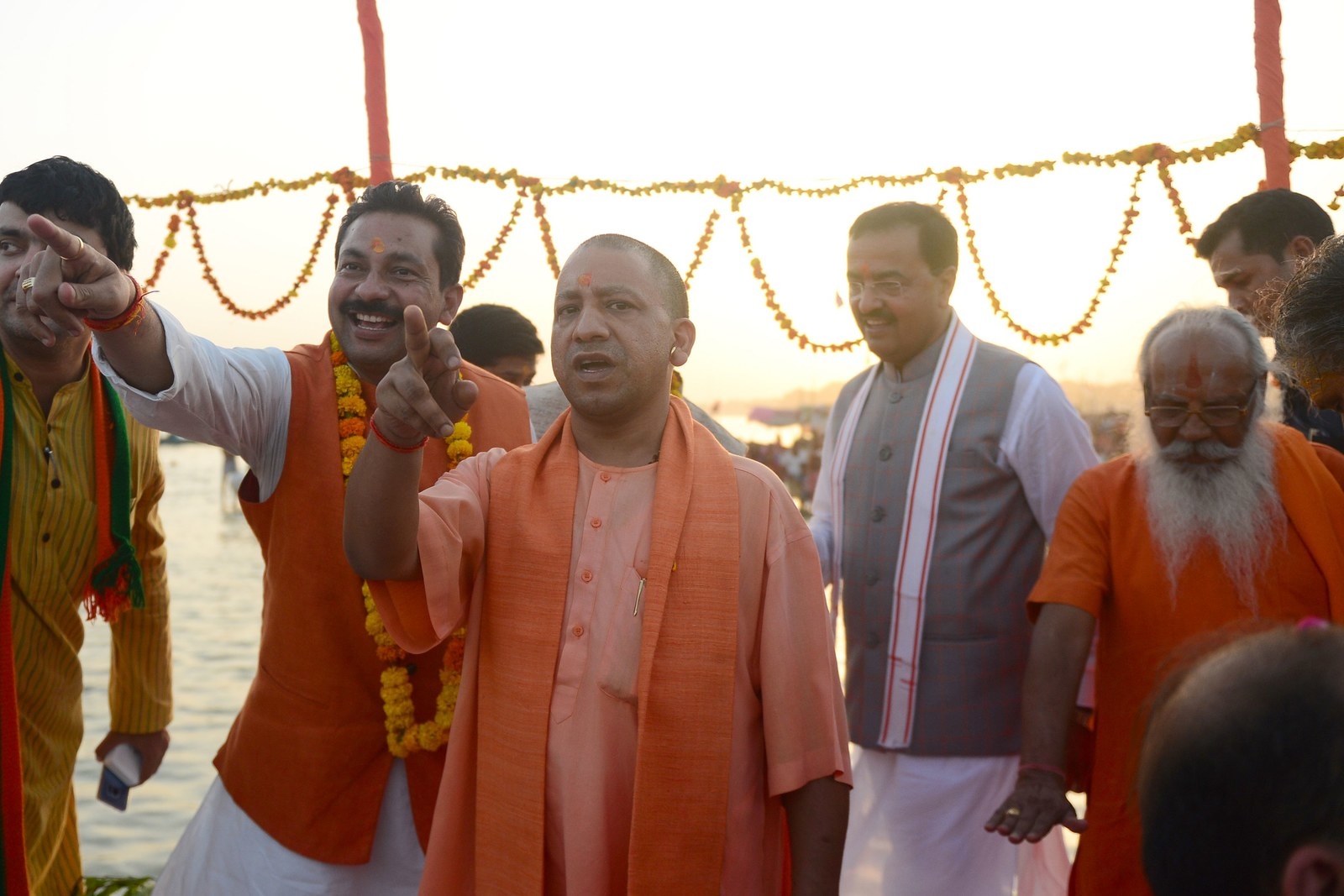
Health is a state subject, meaning the State Government is directly responsible for public healthcare. Although the CM’s chair in Uttar Pradesh recently passed from Akhilesh Yadav to Yogi Adityanath, this responsibility goes beyond who sits on the throne at any given point. The Government is a perpetual entity and dealing with encephalitis has been the Uttar Pradesh government’s perpetual failure.
While the state government’s resources were devoted to initiatives such as giving ambulances for cows, a fatal torch was simply passed up.
The government has long been aware that Baba Raghav Das Hospital, where hundreds of children die of encephalitis every year, is particularly susceptible.
This April, the college requested ₹37 crore in funds from the state government, to improve their facilities. The state government forwarded the request to the central government, but funds are still awaited.
Even the hospital staff hasn’t been paid since February due to shortage of funds, medical college sources told The Telegraph.
While the state government’s resources were devoted to initiatives such as giving ambulances for cows and making Aadhaar mandatory for availing ambulances, this fatal torch was simply passed up.
The Central Government
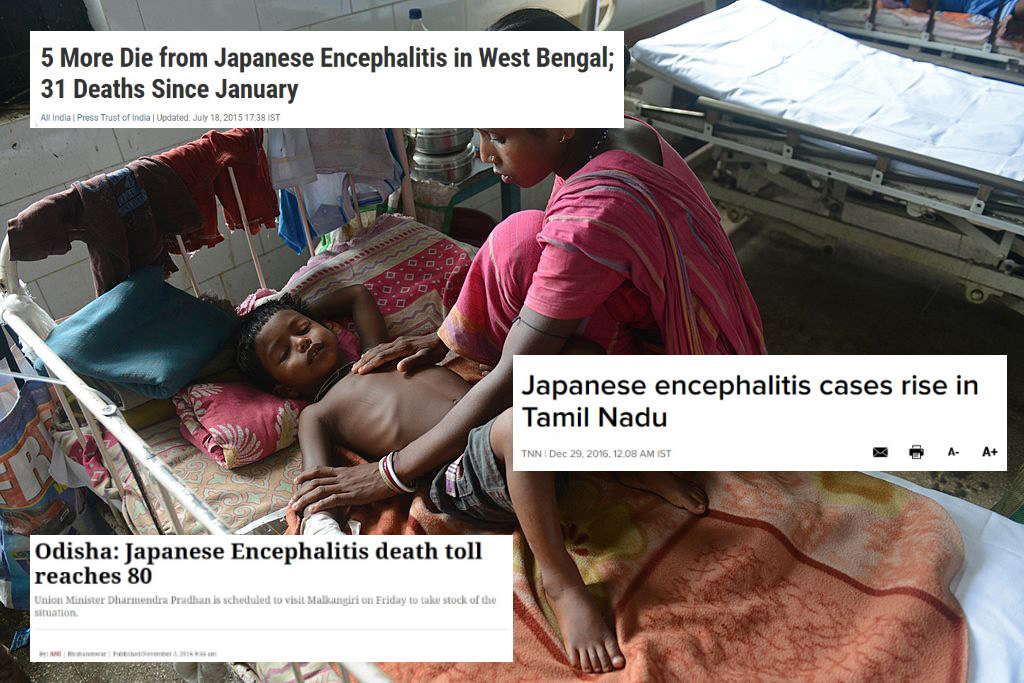
The loss of lives to encephalitis is not a UP-specific problem. Nationwide, over 5000 deaths have been attributed to the disease over the past three years.
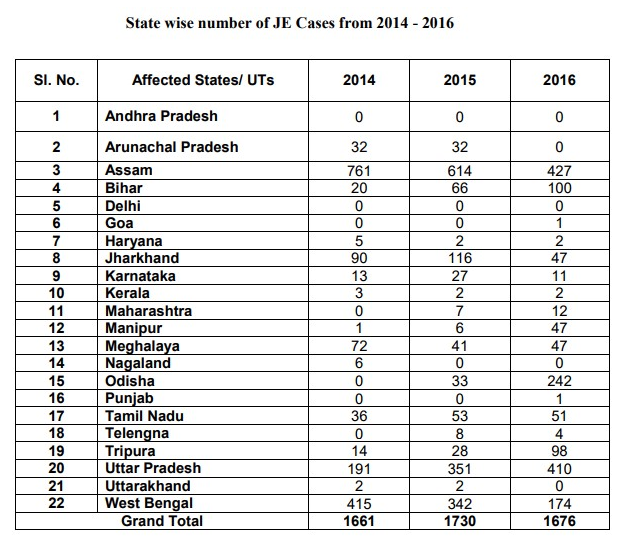
Exactly a year ago, on 11 August 2016, Adityanath himself (then a fifth-term MP from Gorakhpur) had called the attention of the Ministry of Health And Family Welfare to the spread of Encephalitis throughout the country.
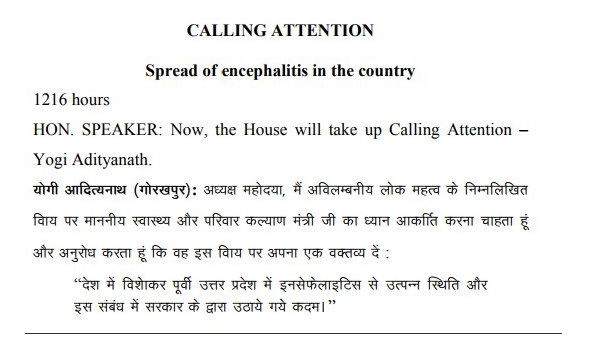
He mentioned that the Central Government has not been able to start a focused program to deal with the problem.

The Minister of Health and Family Welfare, JP Nadda, responded to Adityanath, saying that the Central government was aware and had sent a team to review the situation across the nation.

Gorakhpur was identified as one of the critical districts in UP. Remember, all of this happened a whole year ago.

The government's level of awareness of the problem gets ever more specific.
In the same Lok Sabha debate from August 2016, they identified BRD Hospital, where the recent tragedy unfolded, as key in the fight against encephalitis. They even promised a specialised Vector-borne Disease Surveillance Unit directly under the Central Government.
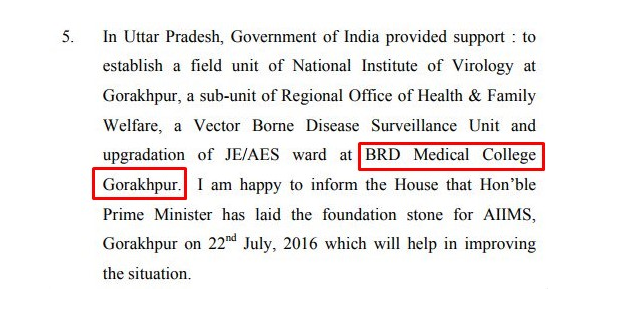
It’s quite clear that the government, both at the Central and State levels, has been aware that India’s fight against encephalitis has been an ongoing crisis, and that Baba Raghav Das Hospital in particular has been running despite a dire shortage of resources and support.
What has the Central Government been upto instead of prioritising our healthcare system’s maximised effectiveness against this blasted disease that’s killing thousands each year?
Building more AIIMS hospitals across the country, warring with the Supreme Court about frequently changing medical entrance exams, and continuing to ignore staff shortages in healthcare.
The children who died this week in Gorakhpur weren’t killed by an unpaid bill or cut-off oxygen supply, but by a massive, systemic failure from top to bottom. The politicians and bureaucrats who had all the information to foresee this disaster did nothing to stop it.
